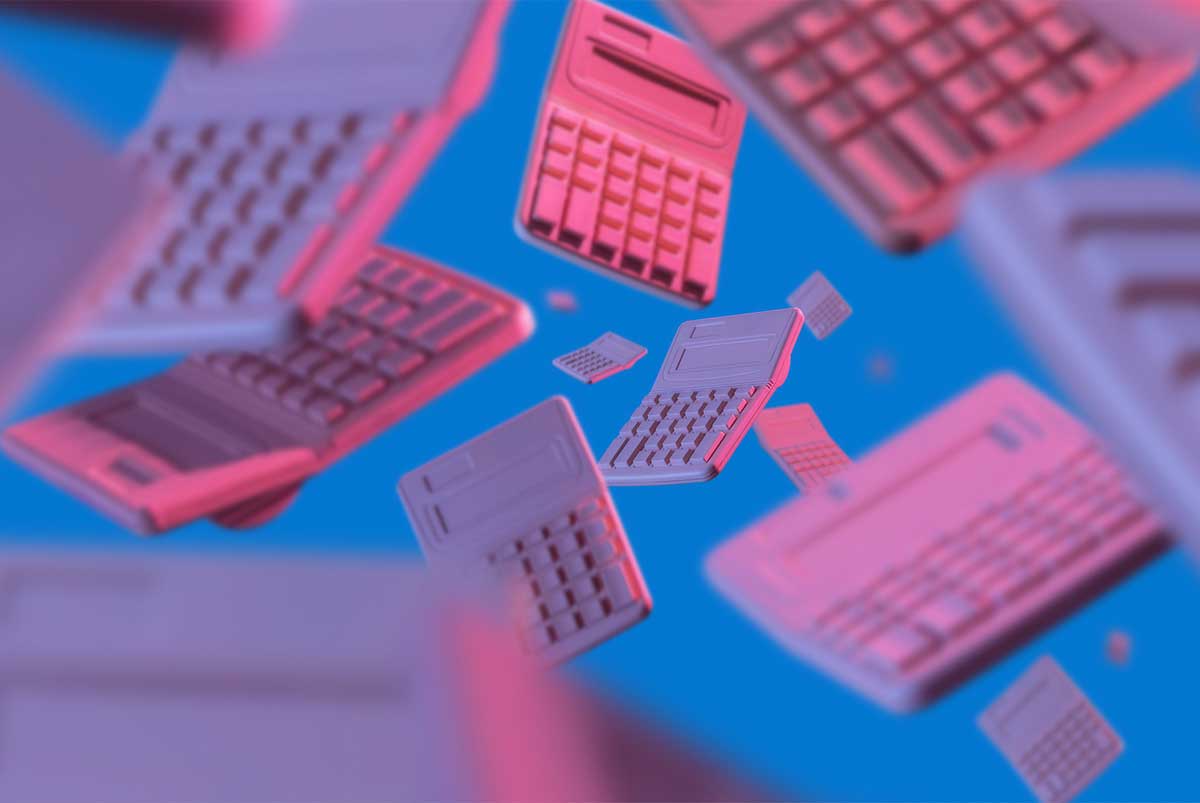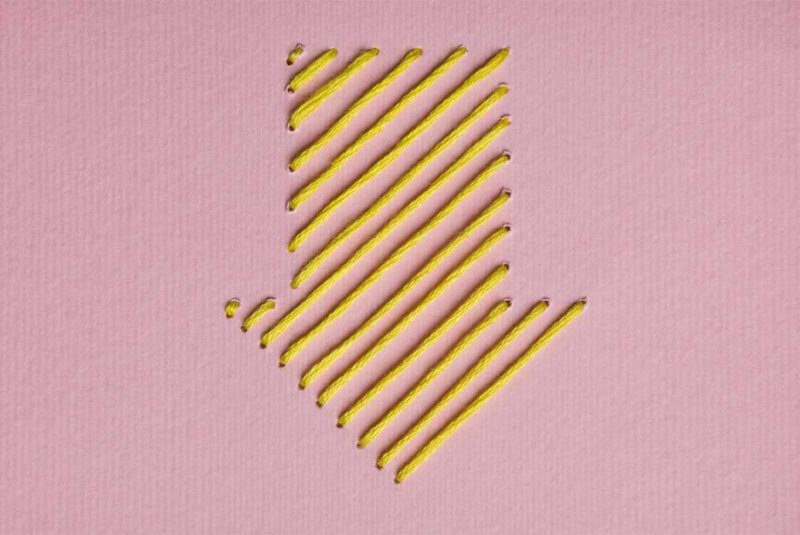Credit cards typically have high interest rates compared to most other types of loans. That means it’s potentially expensive to borrow money with a credit card. When you don’t pay your full credit card balance every month, it’s easy to accumulate boatloads of interest fees quickly.
What is a credit card minimum payment? It’s the minimum amount of money a credit card company is willing to accept each month to keep your account in good standing.
Don’t make the mistake of thinking the minimum due is a “monthly payment” you should be making to pay off your credit card bill. When you only pay the minimum due on your credit card statement, your credit card issuer will make a lot of extra money from you and you pay more over a longer time.
Your credit card statement has a minimum payment warning on it. This table shows the scary amount of interest you’ll end up paying if you only pay the minimum amount due on your card each month. Here’s an example from a real credit card statement:
If you don’t even pay the minimum, the bank will probably charge you late fees, or worse. If you’re over a month late, the late payment may show up on your credit reports and could damage your credit scores. Even if you have excellent credit scores, the damage could be serious, and it could be a considerable period of time before you’ve worked your way back to good credit.
How Much Should I Pay?
Credit card payments can be confusing at first. When you sign into your credit card account online, you may see several payment amounts to choose from:
- Statement balance: The amount you owed when your last billing cycle ended, due by the due date
- Current balance: The total amount you owe, which is usually your previous statement balance minus any payments that you’ve made since it was generated, plus any new purchases you’ve made since your last statement was generated
- Minimum due: A minimum monthly payment your credit card company is willing to accept to not mark your account as “past due”
We recommend you pay the statement balance by the due date every month. That way, you’ll avoid credit card debt and interest. Most credit card companies let you connect checking accounts to set up automatic payments. This makes it easy to pay the full statement balance each month.
Just remember to review your statement to check for fraud or billing errors. We’ll fill you in on interest later in this article. Basically, it’s easy to avoid, as long as you pay on time and in full, and avoid cash advances.
Even though your current balance may be more than your statement balance, most credit cards have a grace period on new purchases. That means you don’t have to pay interest on new purchases right away, or ever, as long as you pay off your full statement balance by the due date each month.
How Is My Minimum Payment Calculated?
The exact way your bank calculates minimum payments depends on the terms of your card. It can vary from one card to the next. Here’s an example of how the minimum payment calculation might be written in typical credit card terms:
Minimum Due is calculated as 2% of the Statement Balance rounded down to the nearest $1. When the Statement Balance is above $15, the Minimum Due will be no less than $15.
There’s usually a minimum amount (like $15 or $25) for the Minimum Due when your balance is at least that high. Minimum due amounts also usually round to the nearest dollar or $5.
If you can’t find a copy of the terms for your card online and you don’t have the copy that came with your card in the mail, you can usually find out how the minimum payment is calculated by calling the phone number on the back of your card.
The main idea here is that the minimum due is usually only about 2% – 5% of what you actually owe. If you only pay that small amount of your debt, the credit card company can charge you interest fees on the remaining debt, which can add up quickly.
Why Is It So Bad To Only Pay The Minimum Monthly Payment?
Here’s why only making the minimum payment (or close to the minimum payment) can keep you in credit card debt for many years.
Let’s say you have a credit card with an 18% APR (annual percentage rate), your balance is $10,000, and the terms of the card say the minimum payment is 2%.
Keeping the numbers simple, we can approximate your first month’s interest charge is $150: $10,000 balance x (.18 APR / 12 months) = $150. So, now you actually owe $10,150. 2% of that is $203, so your minimum payment is $203.
If you only pay the minimum of $203, most of that ($150, or around 75%) is just going toward paying interest you accumulated over the past month. Even though you’re paying $203 to the credit card company, you’re really only paying $53 toward the debt you owed at the end of the previous billing cycle.
Some credit cards have APRs in the neighborhood of 24%. If you repeat this same example using that higher APR, the monthly interest is $200. Since the interest is the same as the minimum payment all of the payment is going to paying interest.
Think about how depressing that would be over the course of a year: you paid the credit card company $2,400 ($200 x 12 months) and you still owe the same amount you did a year ago.
If you were to charge more on that card, you would accumulate even more credit card debt each month because the minimum payment would not even cover the additional interest being added each month. You would be deeper in debt each month even though you’re paying the minimum.
Why Does Credit Card Debt Keep Growing?
With most credit card offers, every time you carry a balance from one billing cycle to the next you’ll be charged interest on the amount that wasn’t paid off yet.
When you’re charged an interest fee, it’s added to your balance. If you carry any of that balance into the next billing cycle you’ll be charged interest on it, including the interest the credit card company added to your bill last month!
This is called “compounding.” The bank charges interest on the entire balance you owe, including any finance charges you owe, every time interest is calculated. This is how credit card debt quickly snowballs into larger and larger amounts, and why it’s hard to make a dent in it.
Even though an APR appears to be an annual interest rate, credit card interest is compounded more frequently, not just at the end of the year. Depending on how your credit card calculates interest, you may owe more money every day you carry a balance, not just every billing cycle. Some credit cards compound interest daily, while others compound monthly.
How Are Finance Charges calculated?
So how exactly does credit card interest work? There are several different methods issuers use to calculate credit card interest rates. To find out exactly how interest is calculated on your credit card, read your cardholder agreement, which you likely received by mail after account opening.
If you don’t have the documents that came with your card, you can usually request a new copy of your agreement by calling the phone number on the back of your card. We’ll describe a few of the common methods here.
Daily balance method
One common method for calculating interest is the daily balance method. With this method, interest is calculated based on your balance on each individual day in your billing period.
Interest can be compounded either daily or monthly with this method, depending on the terms of your card.
If it’s compounded monthly, the balance each day is multiplied by a daily interest rate. At the end of the billing cycle, these daily amounts are added up to result in your finance charge.
If it’s compounded daily, the interest is calculated and added to the balance each day, and then that balance is used for interest calculation the next day. This results in higher interest payments than when your interest is compounded monthly, since you’re paying more interest every day on the interest that was added the previous day.
With both of these methods you’re effectively accumulating more interest every day that you carry a balance beyond your credit card’s grace period. If it’s compounded daily, you’re paying more interest on top of any interest you already owed the day before.
Here’s an example of the Daily Balance method with interest that compounds daily:
Since an APR is an annual rate, your credit card issuer will divide that number by 365 (or 360, as some issuers use) to determine a daily interest rate. If your APR is 15.99%, for example, the daily rate would be 0.0438% (.15/365 = 0.000493). This is known as the daily periodic rate or DPR.
| Daily Periodic Rate (15.99% ÷ 365): | 0.0438% |
Let’s say you have a $1,000 balance on your credit card that you carried over from the billing statement, and that today is June 1.
Today, the issuer will multiply your balance ($1,000) by the daily rate (0.0438%) to determine your interest charges ($0.44). Those interest charges are added to your balance, so you now owe $100.44.
The next day, June 2, they’ll do the same thing: multiply your balance (now $100.44) by the daily rate (0.0438%) to determine your interest charges ($0.44). Now you’ll owe $100.88.
For every day you haven’t paid your balance after that, the card issuer repeats the process:
| Date | Amount Owed |
| 6/1 | $1,000.44 |
| 6/2 | $1,000.88 |
| 6/3 | $1,001.31 |
| 6/4 | $1,001.75 |
| 6/5 | $1,002.19 |
| — | — |
| 6/30 | $1,013.22 |
By June 30th, you’ll owe $1,013.22, so you’re paying a total finance charge of $13.22 over that month.
Since we only followed this for a month with $1,000 of credit card debt, the amount of additional interest owed each day does not appear to change. However, over time, the amount you owe can snowball, because every day you don’t pay down your balance you are owing more interest on the balance (including interest that compounded on previous days).
Average daily balance method
Other credit card issuers use a method called Average Daily Balance for calculating interest instead of the Daily Balance Method. That means they’ll average together your balance for every day of the month, then multiply that by the daily rate and the number of days in the billing cycle.
Let’s say you have a $500 balance entering the month, then pay $500 on the 16th day of a 30 day month. For the first 15 days of the month, your balance is $500. For the second half of the month, your balance is $0.
With this method, the balance on each day is added up, then divided by the number of days in the billing cycle:
(Day 1 Balance + Day 2 Balance + Day 3 Balance … Day 28 Balance + Day 29 Balance + Day 30 Balance) / Number of Days
If you do this math with a $500 balance for the first 15 days and a $0 balance for the last 15 days, you end up with an average daily balance of $250.
To calculate your interest fees for the month, your credit card issuer multiplies the average daily balance by the number of days by that daily rate. We’ll assume the same 0.0438% daily rate from the previous example. In this example, when we multiply $250 x 30 x 0.0438%, the interest charge ends up being $3.29.
Notice how in this example you owe $3.29 at the end of the billing cycle, even though it seems like you paid off all your debt on the 16th day of the month. This is residual interest. We’ll discuss this more in a moment.
Adjusted balance method
This method is much simpler to calculate, and can result in lower interest than the previous methods discussed, but it’s rarely used by credit card issuers. They probably don’t use it because it allows you to avoid interest completely as long as you pay off the full balance on your monthly statement some time during the billing cycle.
With this method, you start with the balance at the beginning of your billing cycle, then subtract any payments you made during the billing cycle. Since there’s a grace period on new purchases, those aren’t added.
The resulting amount is multiplied by a periodic interest rate, based on the APR and the number of days of the billing cycle, to calculate the finance charge.
For example, let’s say the balance left over from your previous statement cycle was $1,000, and some time during the month (it doesn’t matter when) you made a $500 payment. Now, there’s $500 left. Assuming the same 15.99% APR from earlier, the interest rate for a 30 day billing cycle is 1.3325% (0.1599/12 = 0.013325).
$500 x 1.3325% = $6.66, so your interest charge is $6.66, regardless of when you make a payment, as long as you made $500 in total payments throughout the month.
Residual Interest and Timing of Payments
With the Daily Balance and Average Daily Balance methods, you can end up with something called “residual interest.” This happens when you’ve already paid off your entire credit card bill after carrying a balance for a few months, but then you see an interest charge on your next statement.
This is exactly what’s being illustrated in the Average Daily Balance method above. Even though the full balance was paid off during the statement period, there was still a finance charge at the end. This finance charge on your next statement after paying off a card is the residual interest. It’s the interest that accumulated on those days in the first half of the month when you were still carrying a balance, before you paid it off.
When interest is calculated with the Average Daily Balance method or Daily Balance method and you are carrying a balance from the previous billing cycle, the day you choose to make a payment during your billing cycle matters. Ignoring additional purchases, if you make a payment earlier in your billing cycle, you’ll end up paying less in interest than if you make a payment later in the billing cycle. This is because your balance will be lower for more days of the cycle.
Looking at the same Average Daily Balance example as above, let’s move the payment to a different day and see how the interest charge changes.
If there’s a $500 balance entering a 30-day billing cycle, then you pay $500 on the 9th day, the balance is $500 for 9 days, then $0 for 21 days. This results in an average daily balance of $150. So your finance charge is only $1.97 instead of $3.29 ($150 x 30 x 0.0438% = $1.97).
In the same situation, let’s say you pay on the 21st day instead. The balance is $500 for 21 days, then $0 for 9 days. This results in an average daily balance of $350, so the finance charge is $4.60 instead of $3.29: $350 x 30 x 0.0438% = $4.60
Although the numbers aren’t very big in this example, it illustrates how you could end up paying a lot more in interest when you have high balances and you pay off debt later in a billing cycle.
Variable APRs and Ways Your APR Can Change
There are a few ways your credit card APR can change. Based on the following examples, you can see how even a slight increase in APR could instantly start costing you more money if you’re carrying a balance from any previous billing cycles.
Changes to the prime rate
First, almost all credit cards have variable APRs. Variable rates are tied to the Prime Rate. The Prime Rate is 3 percentage points higher than the federal funds rate, which is a rate set and changed by the Federal Open Market Committee (FOMC), an organization within the Federal Reserve system.
The FOMC meets periodically throughout the year to decide whether they should change the federal funds rate or keep it the same. If they decide to increase the rate by 0.25%, for example, the APRs on credit cards with variable APRs will go up by 0.25%. If you’re carrying big balances on credit cards when the Prime Rate increases, you’ll see your interest fees go up, even if your balance is the same. Likewise, a drop in the Prime Rate may lead to lower interest rates.
Unless you’re on the FOMC, fed rate changes are out of your control. Instead, focus on paying your credit cards off in full each month so you can avoid carrying a balance and the interest that goes along with that. As long as you never revolve a balance from month to month, credit card interest fees will be largely irrelevant to you.
For more context on how the Prime Rate and the U.S. economy work, watch this video.
Changes to your credit history
The APRs of your credit cards are often set based on your credit history. A strong credit history can help you score a low APR, while poor or average credit may leave you with a higher interest rate (though there’s no guarantee either way).
Credit card issuers generally check your credit history regularly. If you start maxing out credit limits or making late payments, even on other unrelated accounts, your credit card issuers may take notice.
If your creditworthiness changes, your credit card issuer may change your APR. However, the CARD Act of 2009 sets rules about what card issuers are and are not allowed to do when it comes to rate changes.
- First, credit card companies aren’t allowed to retroactively change the regular APR on existing balances. However, they can change the APR for any new balances going forward.
- Second, if the credit card issuer wants to change the APR on your account, they have to give you a notice 45 days in advance. You have the opportunity to opt out of the change to your account, but if you do that the credit card issuer may decide to just close your account instead.
Penalty APRs
Many credit cards have a Penalty APR listed in the terms of the card. This is a special, temporary APR that’s usually much higher than the regular APR. It gets triggered based on specific negative actions, like making a payment that’s more than 60 days late, for example.
Unlike changes to the regular APRs on your card, the credit card issuer can retroactively apply the penalty APR to existing balances, not just new balances going forward. If you already have significant credit card debt, a penalty APR can quickly increase how much you owe your card issuer. The credit card issuer doesn’t need to give you 45 days notice before invoking the penalty APR, like with other APR changes. But they do need to notify you of the change on your statement.
Under the CARD Act, credit card issuers must reconsider a penalty APR after six months. As a result, you may be able to get rid of a penalty APR by making your next six payments on time. Check the terms of your specific card to understand what can trigger a penalty APR on your account, and how long it can last.
The Short Version
- Minimum payments are usually a small percentage of your overall balance
- Most credit card interest rates are variable, and may change based on the Prime Rate, your credit history, or when penalty APRs are applied
- Interest can be compounded either daily or monthly with this method, depending on the terms of your card




